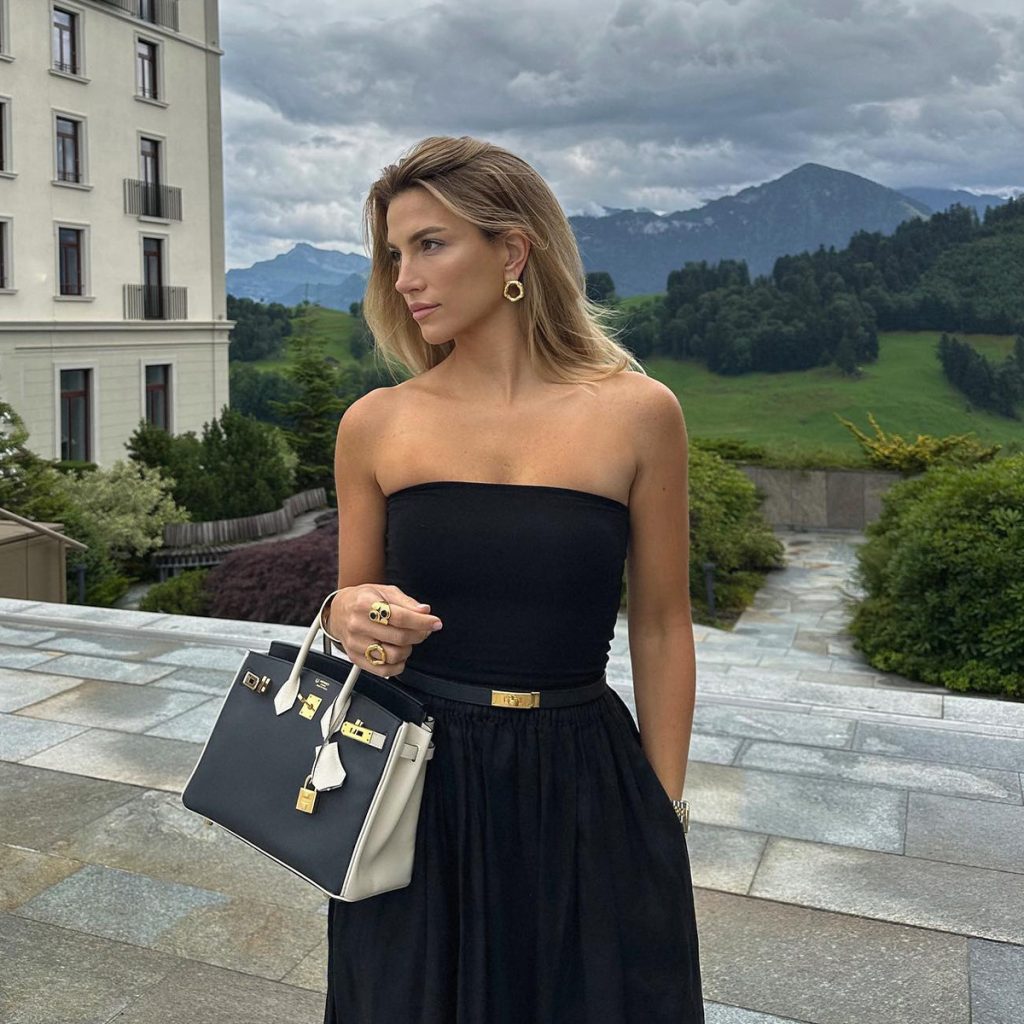The smart casual dress code is a fashion style that blends well-tailored, neat, and versatile pieces to create an approachable yet polished look. It’s a balance between casual wear and formal attire, suitable for a wide range of events.
Understanding the Basics of Smart Casual
Defining Smart Casual Attire
Smart casual is a dress code that emphasizes a chic yet comfortable look. It involves combining elements of formal and casual clothing to achieve an outfit appropriate for a variety of occasions. The key is to look refined without appearing overly formal. This could mean pairing a blazer or sport coat with a crisp button-down shirt and chinos or dark jeans. The objective is to appear well-groomed and put-together, projecting a sense of ease and confidence.
The Evolution of Smart Casual
The concept of smart casual has evolved over time. Traditionally referred to as a somewhat preppy style, it has become more flexible and inclusive of contemporary fashion trends. With the rise of startup culture and the relaxation of corporate dress codes, smart casual has grown in popularity as a versatile and practical approach to dressing. It accommodates a shift towards more comfortable attire while maintaining a level of professionalism and sophistication suitable for the workplace or semi-formal social events.

Components of a Smart Casual Wardrobe
Essential Garments for Smart Casual Looks
To build a smart casual wardrobe, focus on a few key pieces that can be mixed and matched. Essential items include tailored pants, such as chinos or slacks, and skirts or dresses that are not too formal. A selection of button-down shirts, blouses, and neat, well-fitting tops is important. Layering items like blazers, cardigans, and smart jackets add a polished touch. Footwear should be neat and clean, with loafers, dress shoes, or elegant flats being appropriate choices. Accessories should be understated and add a personal touch without being distracting.
Color Palettes and Patterns for Smart Casual Dressing
While there are no strict rules for colors and patterns in smart casual attire, it’s best to opt for classic, solid colors or subtle patterns that are not too loud or distracting. Neutral colors such as black, navy, grey, and white are versatile and can easily be paired with bolder hues or patterns for a personal flair. Plaids, stripes, and other classic patterns add interest to smart casual outfits without being overbearing. Being mindful of color coordination and pattern mixing is essential to achieving a cohesive and tasteful smart casual look.
Smart Casual for Different Occasions
Adapting Smart Casual for the Workplace
In many modern workplaces, the smart casual dress code is becoming the norm. To adapt smart casual to this setting, lean towards the smarter end of the spectrum. A well-fitted blazer and tailored trousers or a pencil skirt are appropriate. Choose tops that are conservative but stylish, avoiding anything too casual like t-shirts or clothing with prominent logos. Footwear should be professional – think leather shoes or polished loafers, rather than sneakers. The goal is to look approachable while still showing respect for the professional environment.

Smart Casual Attire for Social Events
Social events often call for smart casual attire, and this is where you can showcase a bit more of your personality. You can experiment with brighter colors, unique patterns, or fashion-forward pieces that wouldn’t typically be worn to the office. For instance, a stylish jumpsuit or a bold sports coat can elevate a smart casual outfit. The key is to maintain balance; a more casual item should be paired with something tailored to keep the overall look clean and intentional.
In deciphering the smart casual dress code, one discovers a flexible style ethos that suits both professional and social settings. It’s about blending comfort with a touch of class, resulting in a wardrobe that is functional, adaptable, and stylish. Whether you’re dressing for a casual Friday at work, a business lunch, or an evening out with friends, smart casual attire allows you to navigate these events with ease and confidence. By focusing on quality, fit, and appropriate combinations, you can master the smart casual look and be appropriately dressed for numerous occasions without overthinking your outfit choices.
Smart Casual Dress Code for Men
The Male Wardrobe Essentials
For men, mastering the smart casual dress code involves having key pieces that offer versatility and a touch of sophistication. A crisp white button-up shirt is a cornerstone of the smart casual look and pairs well with dark denim or tailored chinos. A selection of polo shirts can also fit into the smart casual aesthetic when combined with a blazer. Well-fitted sweaters or turtlenecks are excellent for layering and can be dressed up or down. Footwear choices such as brogues, derby shoes, or stylish sneakers can complement the outfit, depending on the occasion.
Accessories and Grooming for the Smart Casual Man
Accessories are an important aspect of the smart casual look for men. A leather belt, a classic watch, or subtle cufflinks can add a refined touch to the ensemble. Bags should be functional yet stylish; a leather messenger bag or a minimalist backpack can complete the attire. Grooming is also fundamental; a neat appearance in terms of haircut and facial hair contributes to the overall impression of being put together.

Smart Casual Dress Code for Women
Building a Flexible Female Wardrobe
For women, a smart casual wardrobe is built on flexibility and ease of mixing and matching. Key pieces might include a well-fitted blazer, a pair of straight-leg pants, and elegant yet comfortable dresses or skirts. Top choices could range from silk blouses to structured tops that can easily transition from day to night. When it comes to shoes, women can opt for flats, stylish boots, or a modest heel. The idea is to be chic yet functional, ready for various settings without compromising on style.
Women’s Accessories and Personal Touches
Accessories play a vital role in the female smart casual wardrobe. Scarves, jewelry, and handbags can express individuality and add finesse to the outfit. It’s crucial to strike a balance—accessory choices should be thoughtful and harmonious, avoiding anything too casual or overly extravagant. Personal touches like a vibrant scarf or a statement necklace can set off an outfit, providing a focal point and a spark of creativity to a smart casual look.
The smart casual dress code is about understanding the nuances of dressing notionally casual while looking neat, chic, and intentionally styled. This code gives individuals immense freedom to express personal style within a framework that respects the environment, whether it’s workplace or social. The aim is to look effortlessly well-dressed, blending elements that are neither too laid-back nor too formal. Achieving this balance is an art, and once mastered, the smart casual dress code becomes second nature, ensuring you’re always at your presentable best without compromising comfort.
Adapting to Seasonal Changes with Smart Casual
The smart casual dress code is not a static concept—it adapts to the changing seasons, incorporating elements that ensure comfort while maintaining style. In cooler months, layering becomes key; a lightweight turtleneck paired with a wool blazer can be both practical and stylish. Transitioning into spring or summer, lighter fabrics like cotton or linen provide breathability without sacrificing the smart aspect of the look. Seasonal colors can also come into play, with pastels in spring or earthy tones in autumn. Outerwear, too, follows the smart casual principles; a sleek leather jacket or structured coat can enhance the ensemble while providing the necessary insulation.
By acknowledging seasonal shifts and current trends, the smart casual wardrobe remains fresh, relevant, and aligned with personal style and comfort. The adaptability of smart casual attire to various climates and seasons showcases its true versatility. Whether layering pieces for warmth or choosing lightweight fabrics for the heat, individuals can curate their wardrobe to fit both the weather and smart casual requirements, ensuring they look poised and feel comfortable all year round.
